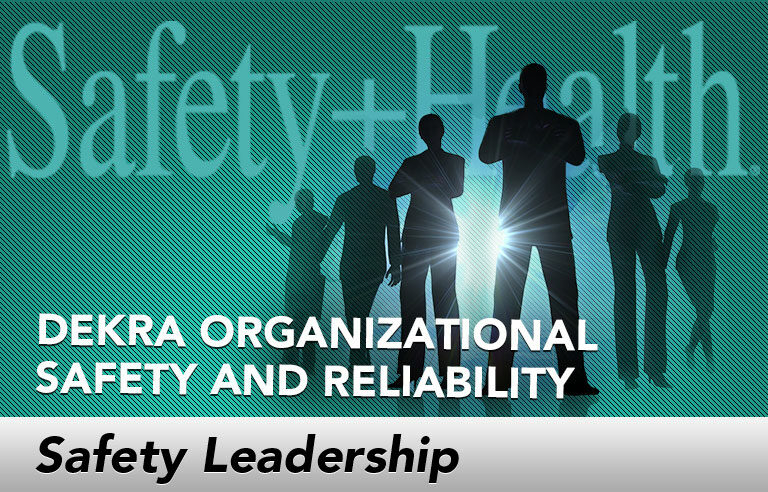Safety Leadership: The most powerful way to change safety behavior

Editor’s Note: Achieving and sustaining an injury-free workplace demands strong leadership. In this monthly column, experts from global consulting firm DEKRA Insight share their point of view on what leaders need to know to guide their organizations to safety excellence.
The next time you walk into a gym, take note of how many personal trainers are present, as well as how many people are working out with friends or in groups. The reason these people are present is because one of the best ways to ensure our exercise behaviors are beneficial is to have others help us. In the gym, that means a personal trainer or friend giving you objective feedback on your exercises, cheering you on and holding you accountable for your workouts.
Now, consider how those same benefits could be applied on the job. Again, the single most powerful way to change your behavior is to ask others for help.
We are social beings
Recent research reinforces the idea that people are social beings. Data suggests our dominance as a species may be the result of our outstanding ability to digest information socially. Here are three critical findings in that area that factor into us making safe decisions on the job:
- Our brains react to the gain or loss of social connections in the same way we experience physical pain and pleasure.
- Our brains are able to social “mind read,” letting us build and maintain teams that allow us to thrive.
- Our brains are designed to achieve more in groups than as individuals.
In safety and decision-making, there can be a significant downside to these factors. It makes us subject to groupthink – a phenomenon in which people within a group become so focused on group cohesiveness that it creates a deterioration of mental efficiency, reality testing and moral judgement.
So how do we take advantage of the benefits of employing others in our safety decision-making while avoiding some of the pitfalls of that same approach? Again, the answer lies in neuroscience.
Slow brain vs. fast brain
Scientists have determined that two distinct parts of the brain handle decision-making: an inter-limbic pathway and a cognitive part.
The inter-limbic pathway handles instinctive or habitual actions. We call this “fast brain” processing. In fast brain, we don’t analyze whether a perceived object or condition or situation represents a danger. We just do.
Meanwhile, we call the cognitive parts of our brain “slow brain” processing. Slow brain enables us to think through situations, assess the potential for danger and deliberate on the best course of action.
From a safety perspective, we need to understand that the slow brain is not always “at work” when we’re at work. However, there are ways to “trick” our brain into going into slow brain processing.
How to make safe decisions
We recently developed a system called the “Making Safe Decisions” approach, designed to increase the amount of time you are in slow brain processing at work. The approach improves:
- The percentage of time that you detect a change in exposure
- Your ability to pause to address that change
- The types of questioning that occur
- The verification and cross-checking that takes place
- Workers’ willingness to approach one another regarding exposure concerns
The “Making Safe Decisions” approach has three main steps:
- Recognizing – Observing your situation
- Thinking – Reasoning through the decision-making process with self-analysis questions
- Executing – Continuously verifying your performance through cross-checking and vocalization
Then, on top of all that, we encourage you to employ the single most powerful way to change your safety behavior: teaming. That means enlisting others to help strengthen your safety defenses. It’s an approach based on the latest neuroscience research – one that has a fair amount in common with those personal trainers at the gym.
This article represents the views of the author and should not be construed as a National Safety Council endorsement.
 Don Groover, CIH (retired), CSP, is senior vice president of DEKRA Insight. Groover develops solutions that leverage the latest technology and advancements to improve safety performance in client organizations.
Don Groover, CIH (retired), CSP, is senior vice president of DEKRA Insight. Groover develops solutions that leverage the latest technology and advancements to improve safety performance in client organizations.
Direct to your inbox: Sign up to be notified in email about new "Safety Leadership" columns.
Post a comment to this article
Safety+Health welcomes comments that promote respectful dialogue. Please stay on topic. Comments that contain personal attacks, profanity or abusive language – or those aggressively promoting products or services – will be removed. We reserve the right to determine which comments violate our comment policy. (Anonymous comments are welcome; merely skip the “name” field in the comment box. An email address is required but will not be included with your comment.)

